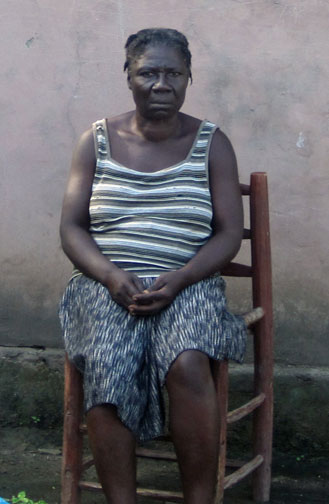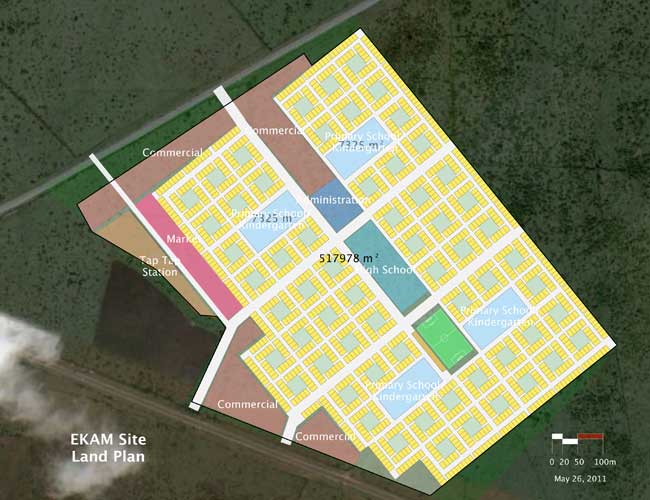Caracol Industrial Park (CIP): By the Numbers
Approximate cost to launch the CIP: over US$250 million
Source of the financing –
US government: US$124 million
Inter-American Development Bank: US$55 million
SAE-A (S. Korean textile company): US$78 million
Number of eventual jobs at the CIP, according to different actors: 37,000 or 40,000 or 65,000…
Number of jobs at the CIP in January 2013, including the 24 security guards: 1,388
Number of farmers kicked off 250 hectares (the Chabert plantation and other lands)
in order to make way for the CIP: 366 families
Amount of agricultural products (corn, manioc, plantains, black beans)
formerly grown on those 250 hectares: 1,400 metric tons each harvest
Monetary value of those products: US$807,638 (each harvest)
Approximate cost of indemnifying and eventually relocating the farmers: more than US$4.6 million
Amount of money paid, per hectare, for each lost harvest: US$2,450

Farmer Efanie Digue, 60, today has no land to till.
Photo: Lafontaine Orvild/HGW
Average amount of land formerly farmed by each of the 366 families: 0.68 hectares
Amount of money received by each farmer for each lost harvest, on average: US$1,666
Number of new homes promised for the region from various actors: “up to 5,000”
Number of new homes under construction (January 2013) at the EKAM site,
financed by the US government: 750

A chart showing the EKAM housing blocks, schools and commercial areas.
Amount of money spent by the US government to prepare the EKAM site,
which will eventually have 1,500 small houses, schools,
and other infrastructure: US$13,724,975 or about $9,000 for each eventual home
Amount of money committed to the US firm Thor Construction
for 750 small houses: $17,632,839 or US$23,510 for each small house
Sources: UTE, BID, US government documents, including http://www.usaspending.gov
Return to main story

